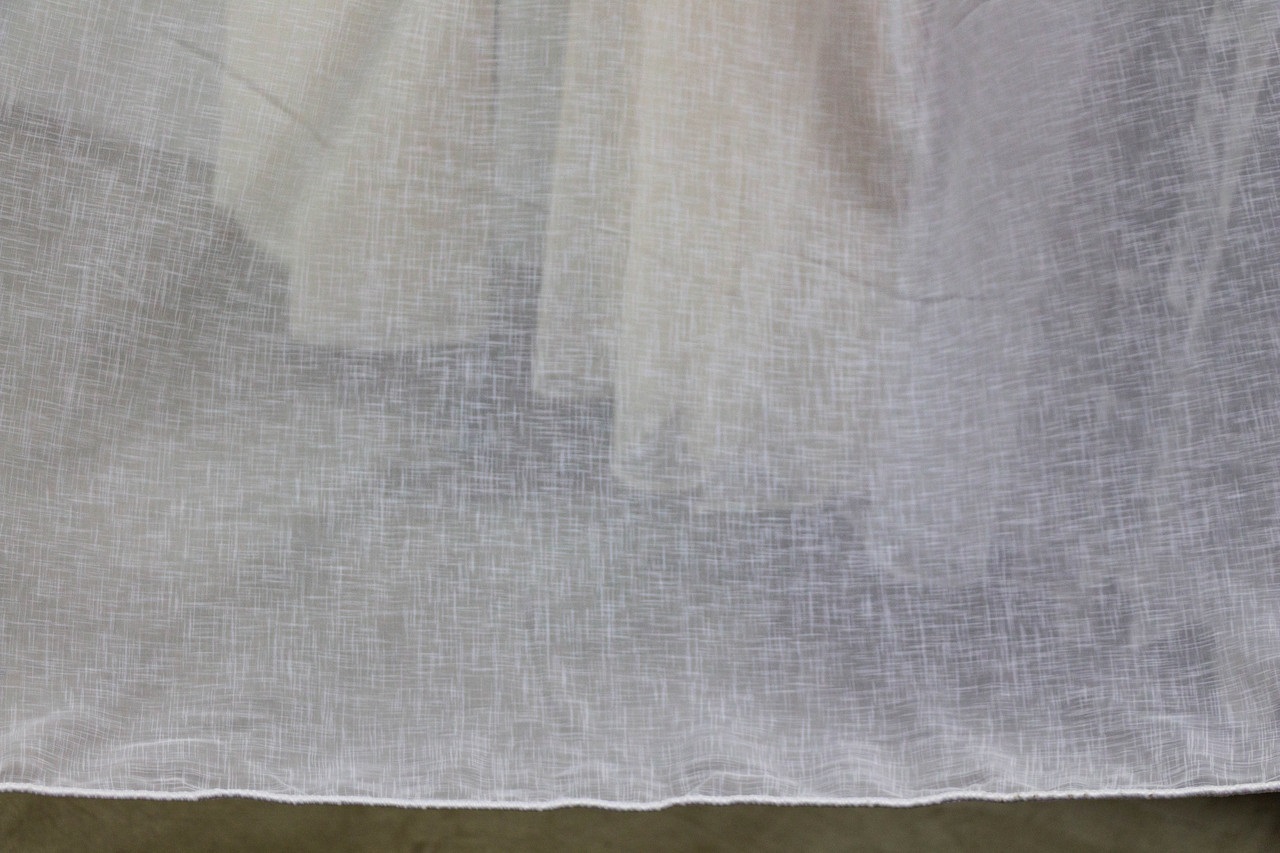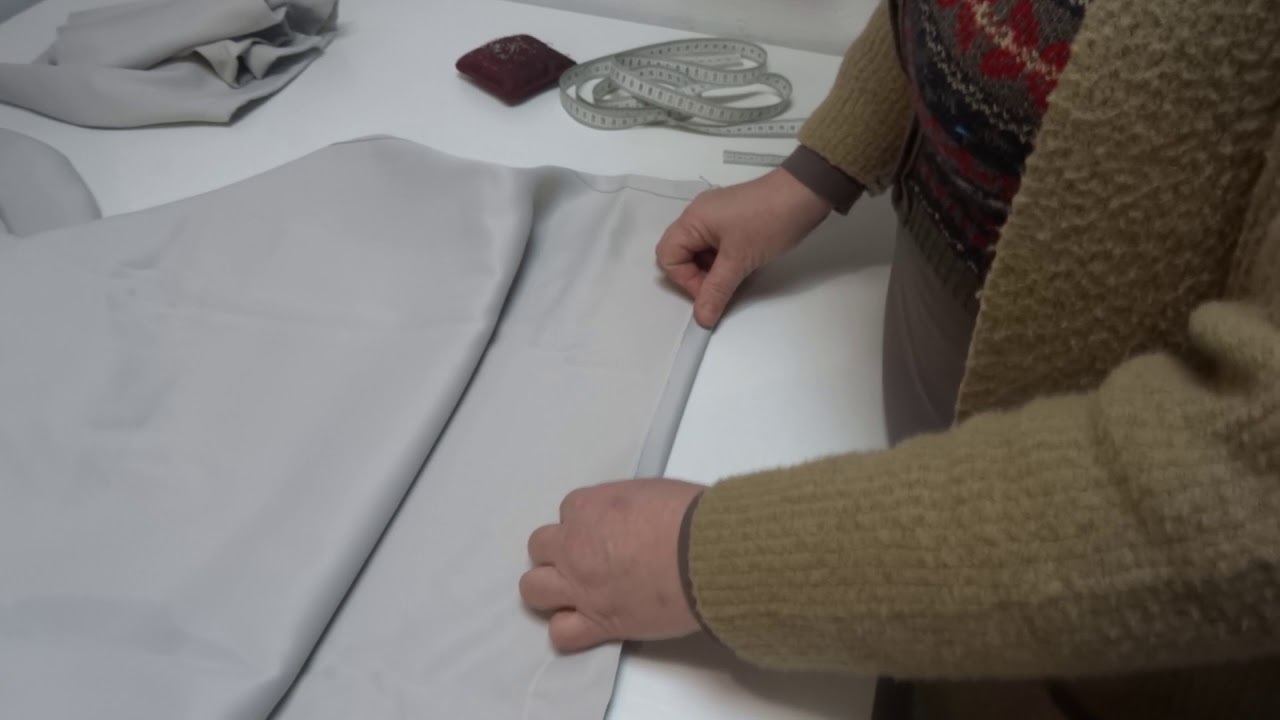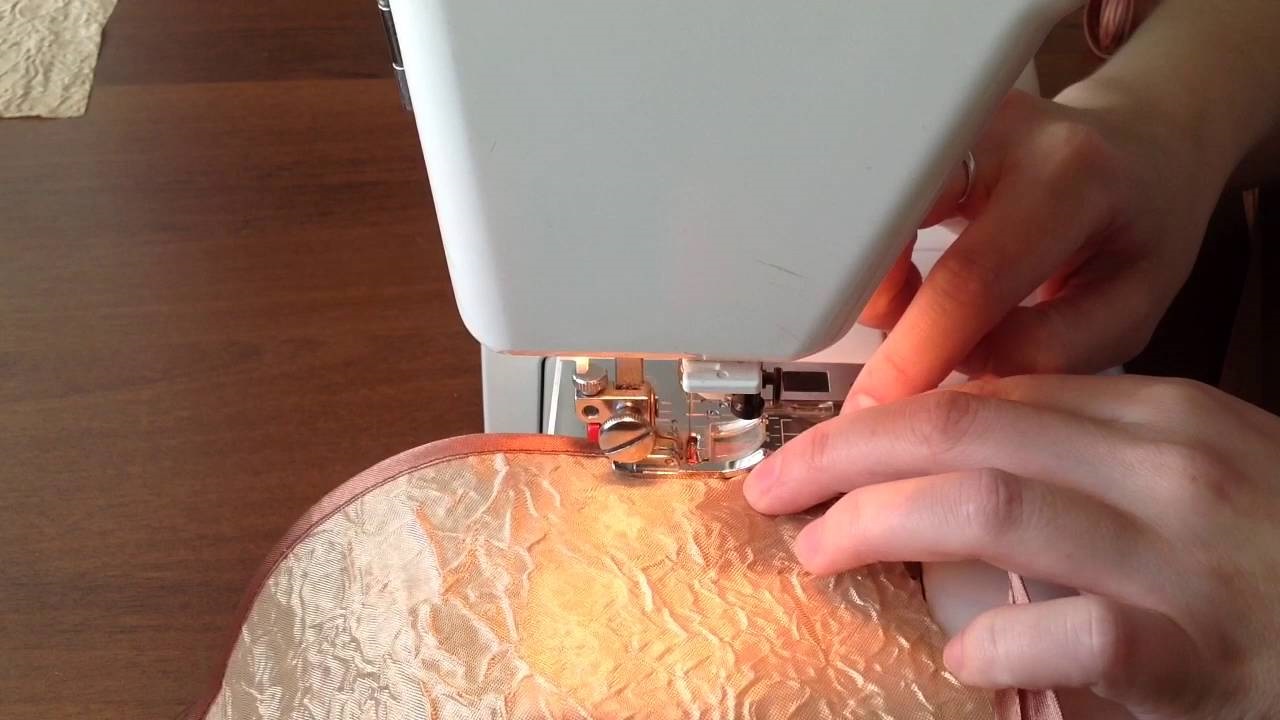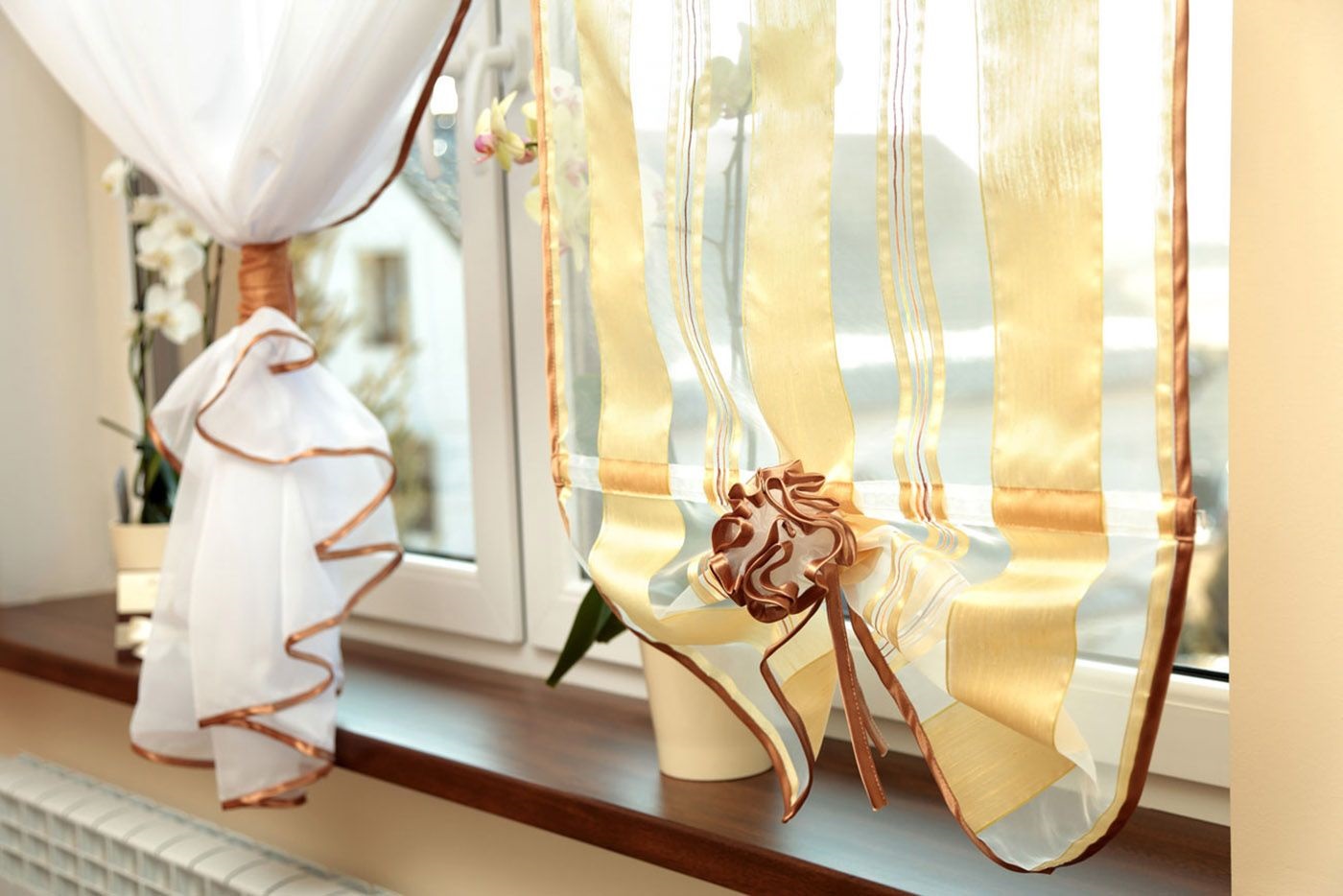How to hem tulle at home
A well-chosen tulle is one of the conditions for a harmonious and cozy interior. Unfortunately, it is not always possible to purchase ready-made curtains that would ideally fit in size, color and fastening method, so sometimes you have to hem the tulle yourself. How to hem the tulle correctly?
Material features
Tulle is a light translucent material. It can be made from synthetic or natural fibers. Blended fabrics are especially popular. Since the presence of synthetic threads often makes it easier to care for the curtains. So, we have decided on the material, now it needs to be brought to "readiness" so that it fits in length and width.

What length options can there be:
- Up to the windowsill. Often this length is chosen for children's rooms. It is convenient and helps to solve some problems. For example, if a child is crawling on the floor, he will not get tangled up in long curtains. And also in the case when older children begin to actively play in their room (hide and seek, catch-up, and so on), the curtains will be completely safe. Besides, curtains up to the windowsill are a great idea for the kitchen. Firstly, such curtains will not get too dirty, and secondly, you will free up additional space on the windowsill, on which you can place the necessary things. Agree, a nice bonus.
- Tulle to the floor. This length is considered classic. The curtain completely covers the wall, and even the baseboard. Often this option is used to decorate a window in the living room. Of course, this is not the most practical model, but for some interiors it is just perfect.
- Standard length. This name was given to curtains, the length of which is 2 or 4 centimeters above the floor. This is a very functional option. Curtains do not rub on the floor, do not get dirty and last longer.
- Slouchy tulle. Outwardly, it looks like this: the curtain not only completely hides the wall and baseboard, but also lies on the floor in voluminous folds. On the floor, the waves must be laid by hand. As a rule, the length of the overlap is 15-20 cm.

Important: this model is suitable only for rooms with high ceilings, and is categorically "contraindicated" for rooms with low ceilings. Visually, the product reduces the size of the room.
When modeling and sewing curtains, do not forget about the standards for filling the window opening in width. It also has its own rules. After all, the finished curtain should look impressive and complete.

The minimum proportion for stylish filling is 1: 2. This is suitable for both plain curtains and tulle with a large pattern. If you take even less, then the curtains will look wretched.

The optimal filling of the window opening space is 1: 3. Then you are guaranteed a rich decoration.And just one caveat: give up curtains with a large pattern, give preference to either a small print at the bottom, or a solid tulle.

How to cut the tulle straight
Everyone has heard about the fact that you need to measure seven times and cut only one. This applies to tulle more than to all other materials. The thing is that tulle is a very thin and delicate fabric, it is very difficult to cut it exactly because the material slips. Any inaccurate movement will leave puffs or holes on the curtain.

Fold the canvas in half and join the edges symmetrically on a solid and level surface. Unfortunately, it is not possible to install an industrial table for cutting tulle and nylon fabrics in the apartments. Therefore, you have to be content with what is at hand. In this situation, the floor of the apartment is suitable. You may also need the help of another person.

A little trick: if the canvas slides on the floor, then you can put a cotton cloth under it or fix it with masking tape.

How to shorten the tulle? There are several effective ways:
- Pull out the cross thread. The algorithm of actions is as follows: lay the fabric on the floor. Then, using chalk, mark the desired length through certain segments. A small incision is made on the fabric at the edge, pry on the thread, and pull it out across the entire width of the canvas. We notice the place where the strip has formed and cut the tulle along it. In this case, you can use a clerical knife for cutting, or you can use ordinary scissors, as long as the tool is sharp. This method of folding tulle with your own hands is considered the simplest and most practical.
- Make several cuts in the material. We proceed like this: first, fold the canvas in half, making sure that the edges are exactly aligned. The first small cut is made at the point where the edges separate slightly. Then we cut another cut, extremely neatly folding the canvas in half. In the process of these manipulations, you need to ensure that there are no folds or creases on the material and again make an incision where the previous marks are already traced. It is important to ensure that the incisions are symmetrical. Finally, making sure that the fabric does not move from its place, we unfold it back. After some simple manipulations, you have a material folded in half on your table (or on the floor). Now it remains to take a ruler and connect all the resulting marks, drawing strokes with a pencil or chalk.
These two methods are considered the simplest, and, at the same time, effective. So, by strictly following the instructions, you are guaranteed to get the result.

How to hem tulle
This is perhaps even easier than cutting the canvas. You will need a little neatness, patience and an unpretentious set of tools: thread, needles and scissors.

Important: the threads for the tulle should be thin (number 40 is the thickest allowable value). And one more condition: the color of the threads should merge with the fabric. Well, if the fabric is transparent, choose threads a little lighter, then they will be invisible.

Bottom edge processing
There are options here. First, the bottom edge is processed, then the sides, and at the very end - the top.

If there is a beautiful coupon figured part on the fabric, then the product is left from below as it is, and immediately go to the sides. If such a canvas needs to be shortened, then this is done from above. In all other cases, the tulle is hemmed, as they say, in a hem, tucked 3-5 cm, and after processing, they pass along the edge with an iron.

Side cut processing
On the sides, the tulle is hemmed either in the traditional way - with a Moscow seam, or with the help of an oblique inlay, or hem. The latter method is used extremely rarely, but it still takes place.

And one more nuance: such a thin fabric, like tulle, cannot be processed with an overlock, since the fabric will be ugly pulled together.

In the fold
This is perhaps the most common way to trim tulle edges. For a mesh, the hem width will be 10 mm, for organza - 30 mm, for a veil - 20 mm, for nylon - 30 mm.

Oblique binding
This method will require certain skills from you, and in return will allow you to implement some design ideas. For example, you can choose a fabric that will exactly match the color of the tulle, or opt for a similar shade. In the end, no one will stop you from choosing a contrasting material and turning the edge of the tulle into a bright accent.

By the way, as an option, the color of the inlay can be combined with the colors of the carpet, flooring or wall decoration. Such repetition in the palette creates a very interesting atmosphere, brings zest to the interior, and makes the usual design of the window opening a stylish accent of the design solution.

In order for everything to work out neatly and evenly, it is better to use a special foot or snail foot for the machine. The algorithm of actions is as follows:
- Fix the trim on the tulle with pins.
- Check the correct position of the inlay.
- Lay the line.

This is important: usually the bias tape is chosen for trimming the side sections of tulle in the form of a net or with three-dimensional embroidery.

Moscow seam
This version of the hem can be safely called a time-tested one. It also requires a special foot on the sewing machine. The main advantage of this method is that the fold width is minimal, and the fabric itself does not lose its lightness and airiness. And if you practice a little, you can master the skill of bending the tulle with a Moscow seam at home.

Algorithm of actions:
- Tuck the fabric up 0.5 cm.
- Ironing on the fold.
- We lay a regular line at a distance of 0.2 cm from the edge.
- Cut off the excess fabric, departing 0.2 mm from the stitched edge.
- We roll up the tulle.
- Iron it again.
- We stretch it at a distance of 0.2 mm from the previous line.

It is with this method that the material costs for hemming are minimal.
Processing the top cut
The top edge can be finished in several ways. The most common option is using a special tape (also called extrafora). Today, a large assortment of all kinds of materials is offered, thanks to which the canvas drapes beautifully and becomes functional. Tulle tape should be transparent, made of nylon.

Since tulle is a material that crumbles during processing, the use of eyelets for fastening is undesirable. The most suitable option is the use of satin ribbons. In addition to being practical, such a move will make the window decoration more interesting.

Features of working with curtain tape:
- The curtain tape is attached to the main fabric using two parallel lines. In this case, the tightening tape should remain in the middle and "move" freely.
- If you use a ceiling cornice for fastening, then you need to make the necessary allowance to the length of the tulle. Of course, this is provided that you will not use a lambrequin.
- When the side cuts are finished, it's time to decide on the length of the tulle. The curtain for the wall cornice should be 10-15 centimeters smaller than for the ceiling mount.

How to sew a curtain tape:
- Lay out the tulle with the wrong side up.
- Make a 2.5 cm fold along the edge.
- Iron.
- Place the tape on top.
- Fix it with pins.
- Sew 0.2 cm from top edge.
- Bend the tape allowance inward by 2 cm.
- Lay the second line with a minimum indent of 0.1-0.2 cm.
There is another interesting technology for processing the edge of tulle, which is called seamless. In this case, a special tape is used, which is often called "cobweb". Under the influence of the iron, the tape is glued to the tulle and fixes it securely. With this technology, the main thing is to choose the right temperature so as not to spoil the canvas.
It seems only at first glance that it is simply impossible to bring the curtains "to mind" without proper education at home. In order to hem the tulle correctly, you need accuracy, patience and strict adherence to simple recommendations.
Video: how to hem organza tulle





